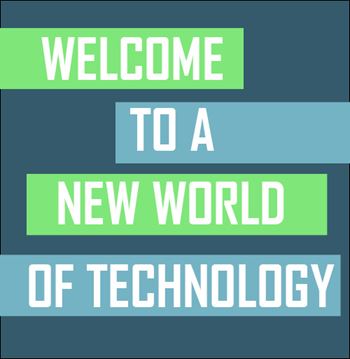Data and digital technology present infrastructure professionals with a unique, yet so far under-exploited, opportunity to transform the way we design, construct, operate and maintain our built assets. Our challenge is to embrace it, while keeping users and society benefit top of mind.
The infrastructure world is awash with information. Maps, drawings and models help to design and locate our assets; schedules and charts control the programme for construction and maintenance; spreadsheets help oversee costs; monitoring systems help manage operations; databases store vital asset information.
Digital technology has already started to simplify the way in which we interact with this vast bank of information; the work already done to embed Building Information Modelling (BIM) into the construction process provides a fantastic foundation for the journey ahead as we take a giant leap towards an ecosystem of connected digital twins.
The UK government is fully behind this. In July 2018, the Treasury launched the Centre for Digital Built Britain’s Digital Framework Task Group (DFTG) as the means for bringing together government, industry and academia in the pursuit of the National Digital Twin for the built environment. The DFTG’s role is to lead the UK’s programme to deliver the National Digital Twin and the Information Management Framework on which it will be based. For the last 18 months, we have been working with industry to establish the principles and values on which to base the strategy that will underpin this ambition.
What is a digital twin?
So, what exactly are we talking about when we describe the digital twin? And why is data so important for infrastructure and the built environment?

At one level, the digital twin is a realistic digital representation of something physical. But what really makes a ‘digital twin’ is its connection to the physical world. Receiving data from the real world, a digital twin unlocks value by enabling improved insights that support better decisions, leading to better outcomes back in the physical world. So, when we dig deeper, we see that this new technology presents the chance to truly embrace the power of information and data; it is a chance to focus on improving outcomes for the user.
In short, by helping us to manage infrastructure data more effectively, digital twins will help us to maximise the value we get from investment in our built assets, and improve the actual results delivered to society.
The potential prize is huge. According to the National Infrastructure Commission’s 2018 report ‘Data for the Public Good’, use of data already contributes £50bn a year to the UK economy, and this is only going to increase. Yet, to date, infrastructure and the built environment remains far behind the curve.
WELCOME TO A NEW WORLD
Digital twins in themselves are not new; but they are to this industry. They come in different shapes and sizes and fulfil different purposes across sectors. Each will individually unlock value from data that it accesses – as seen already in industries such as manufacturing – and, crucially, all the necessary technology is available.
In all cases, what defines digital twin technology is its connection to physical assets via data feeding into it from a vast range of sources. It’s about doing something clever with that data using analytics – including artificial intelligence – to enable better decisions that then facilitate better interventions back in the physical. So it’s a two-way connection – data going one way; interventions going the other.
But, to maximise the value from these individual digital twins, it is important that there is an agreed vision for connecting them up. Hence the National Digital Twin, bringing together our multitude of virtual assets and enabling all-important data sharing across sectors and commercial boundaries.
Of course, in creating the National Digital Twin, we are not looking to build one vast twin. To do so probably isn’t even possible. Instead, an ecosystem of twins is envisioned, based on making connections between individual digital twins. And those connections are all about secure, resilient data sharing. Shared data is what creates a digital twin.
The challenge today is to create a dual-track strategy – supporting the creation of individual asset- or sector -focussed digital twins, while also facilitating data sharing across the sector, organisational and commercial boundaries to form the ecosystem of connected twins – the National Digital Twin.
A vision for a data-powered and user-centric infrastructure
If we just go ahead building twins without direction or a vision for the National Digital Twin then everyone would do it in their own way, and so build friction into the system when we try to bring things together and share data. But if all we have is a vision of a wonderful end point – a connected ecosystem – then we will probably not actually get on with the first step. So, we need both: a vision that gives us a direction but also support to help industry get on with making individual digital twins to deliver greater value to infrastructure users.

Crucial to the success of this journey is engaging and aligning the industry – not only the infrastructure owner-operators, but the vast number of businesses that work across the sector – to both understand and shape the direction for the programme. Whether you are a multi-national organisation or an SME working in the built environment, there is a role for you as we develop the National Digital Twin.
Of course, resources are limited in every business, regardless of size, so it’s crucial to be able to demonstrate to every organisation the return that they will get from the investment required. Only once it makes sense will they engage with digital twins and start to share data and enable the National Digital Twin to emerge.
So just being able to articulate the vision is not sufficient; we must also incentivise each part of the value chain to make a move. And that does not necessarily mean having to invest in new skills and new technologies. Rather, it means simply helping businesses across the built environment to understand the real value of data, data analysis and better decisions; helping them to understand how that data enables better interventions and why it is then possible to achieve better outcomes for customers.
Armed with this insight, firms will more easily see the big picture and understand where the return from investment in people, skills and technology will come from and, of course, how that investment will lead to better outcomes for citizens.
Latest news
- DEFRA has today opened the Improving Farm Productivity grant
- Carter Jonas Reports Half Year Results for 2020
- Carter Jonas Strengthens Rural South West Team With Senior Appointment
- Battery Energy Storage
- Carter Jonas signs-up to Time to Change initiative
- Raft of Promotions at Carter Jonas
- Carter Jonas Achieves Gold Investors In People Accreditation
- Newbury Straw Sale met with Selective Trade as Spring Approaches
- Newbury Straw Sale met with buoyant trade




